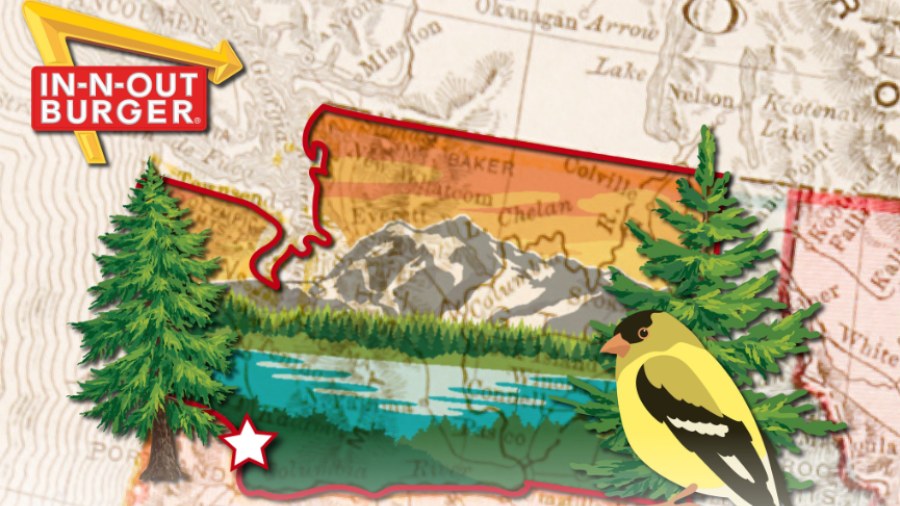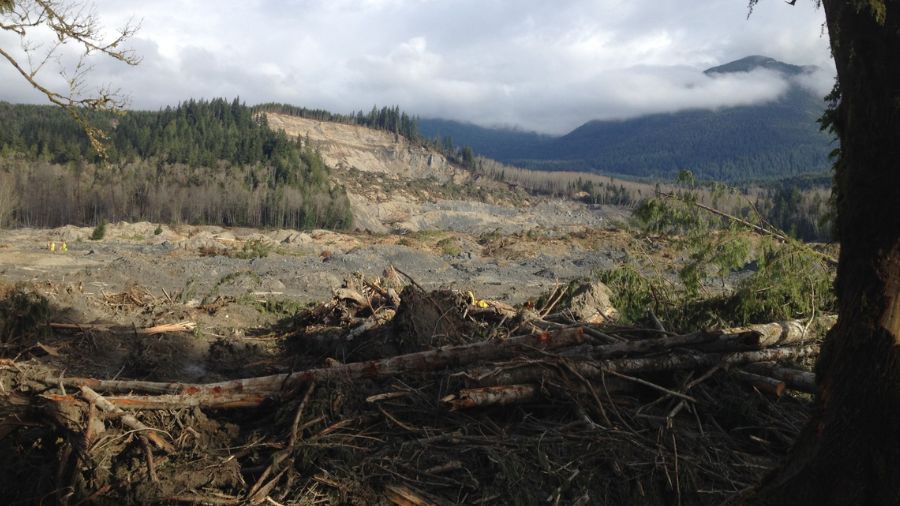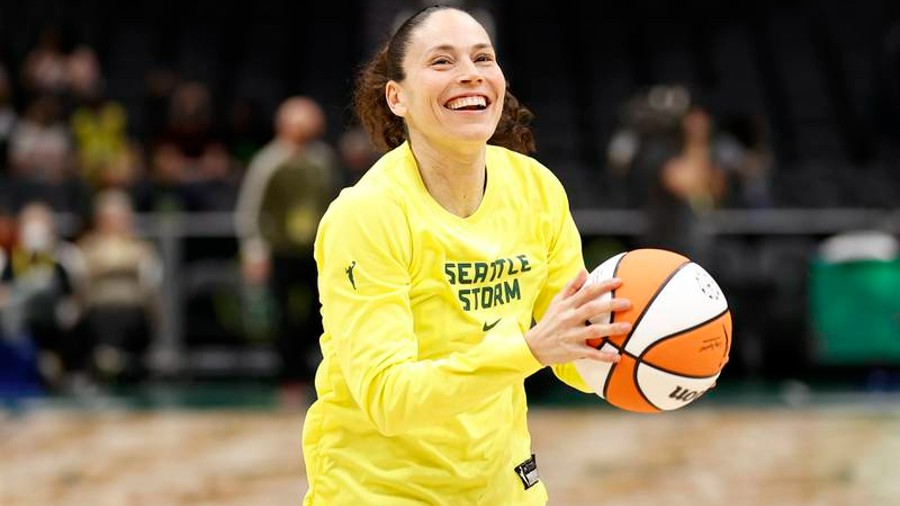Seattle survived its first big social media snowstorm
Feb 20, 2019, 9:04 AM | Updated: 9:22 am

Snowfall in Edmonds, Wash., February 2019. (Martin Banel)
(Martin Banel)
By most accounts, the series of weather systems that hit the Seattle area earlier this month amount to the region’s first big snow storm of the social media era.
The previous Seattle snow storm of any consequence and duration took place back in December 2008, just a year into the rise of the iPhone, and during a time when nowhere near as many people were on Facebook. In 2008, there were an estimated 100 million Facebook users worldwide; recent numbers put the current figure at more than 2.3 billion users.
RELATED: The windstorm that sank Hood Canal Bridge
RELATED: We don’t have to believe everything on Facebook
RELATED: Once again, the viral video got to us
For anyone watching Facebook, Twitter and other social media feeds while the flakes were falling, February’s storm played out in real time, and made for some fascinating social and historical documentation and commentary. The storm, and all those cabin-fever inducing school closures, even had YouTube providing a platform for unofficial but extremely catchy theme song.
And what exactly does it all mean that Seattle has finally experienced, and apparently survived, its first social media snow storm?
Three local experts shared their perspectives earlier this week.
For one thing, photographer Jean Sherrard says that future historians are going to have a mountain of images and other data to sift through to understand how people experienced the 2019 snow.
“We see from [the Big Snow of] 1880, when there were a handful of photographers in downtown Seattle and [only] a few of them would get out in the snow with their equipment and take a few photographs,” Sherrard said by phone. “Today, I’d be surprised if there weren’t hundreds of thousands of photographs of our snow event, or more. It’s almost incalculable.”
Sherrard collaborates with Paul Dorpat each week to produce The Seattle Times’ popular “Now and Then” feature, and he has dug through the archives looking back at images of earlier Seattle snows, including 1880, 1916, and 1950.
“Going back a hundred years, whether it’s the Seattle snow in 1880 … you only have a handful of images, so it makes each one a little more precious,” Sherrard said. “And what does that say about how we value images today when in place of a dozen, we have a million?”
As far back as those 19th century storms, Seattle snows have always been an “unexpected holiday,” says Jean Sherrard, when “all bets are off, all rules are suspended, [and] nobody’s going to work,” so it makes sense to him that the city’s first big snow of the social media era instantly become a highly-photographed event by anyone with a smartphone.
Sherrard says that because of the sheer numbers of snow photographs taken by smartphones, the real trick in the years ahead will be sorting out the useful images and data from the bad stuff.
“For future historians, for someone a hundred years from now,” Sherrard said, “the amount of material is going to be so staggering, there’ll probably have to be some kind of artificial intelligence. It’s a waterfall and each of us are mere pipettes.”
Social media documentation
One organization that was actively sorting, analyzing and sharing the social media snowstorm pictures and data in real-time during the snow was the Seattle office of the National Weather Service.
Seattle NWS meteorologist Courtney Obergfell says that the stream of photos and reports shared via Facebook and Twitter by civilians helped her and her colleagues keep their forecasts up-to-date during a rapidly changing, and often extreme, weather situation.
“We received probably over a thousand reports over the last few weeks of what was happening where people lived, so all across our area we got an idea of was it raining; was it snowing; if it was snowing, how much it was snowing; what the winds were like,” Obergfell said on Tuesday. “And really, it was a give and take, so we could feed that information back to everybody else and update our forecasts pretty rapidly as the event was evolving.”
Obergfell says that this ability to gather and share visual information about conditions very quickly via social media made a noticeable difference in keeping people off the streets and minimizing potential weather-related traffic problems.
“We avoided some of those issues [by] … getting people to change their behavior, because we have those pictures and those videos and those rapid updates that are not only coming from us, but are coming from their peers as well,” Obergfell said.
Among the images that many people shared during the storm it was common to see a yardstick or a ruler stuck into a backyard snow bank to show exactly how much snow had fallen. These images appeared so much on social media, they almost seemed like a kind of unintentional meme.
And, according to Courtney Obergfell, it turns out those particular kinds of photos are actually pretty useful to the National Weather Service.
“We really like those pictures,” Obergfell said. “Because they’re actually measurements versus somebody [saying], ‘Oh, I got about a foot,’ but you don’t really know. The actual rulers and those kind of imagery are great for us to get a more accurate sense of what’s going on.”
Obergfell sees the National Weather Service relying more and more on this kind of social media information gathering in the future to understand differences in how weather affects certain areas, and to prepare more accurate forecasts.
“We’re still kind of in the infancy social media-wise, compared to some of the other major corporations that really have this embedded, as far as how we use this in the future and how we archive those things,” Obergfell said. “But certainly, when we go back and look at these events, that kind of information is invaluable to . . . look at the forecasts and how we can improve, how we can better communicate [about] these sorts of events.”
Obergfell says that the Weather Service doesn’t have a formal process for archiving social media from storms, but that the Seattle office “started creating a stream of information that we keep, and putting a stream together of some of the pictures and videos that we looked at with links back to the tweet of the Facebook post, so that if we need to go back and look at it.”
Social, cultural impact
Another professional who was paying attention to the social media snow storm, and who thinks about the social and cultural impact of communications technologies year-round, is Hanson Hosein.
Hosein is director of the UW Communications Leadership Masters Program, and while he agreed that this was definitely the first big Seattle snow of the social media age, he had mixed feelings about whether this kind of social media storm is something to celebrate.
Given all the criticism lately of social media in general and Facebook in particular, does Hanson Hosein at least believe that the kind of photo and information sharing that took place during the storm might be one of the unequivocally good things about social media?
“I think for the most part yes,” Hosein said. “At the same time, social media and especially visual social media, disproportionately can affect our emotions and focus us on things that don’t necessarily require a heck of a lot of focus, but because they’re so captivating we say, ‘Oh my God, that ice is terrible, let’s make sure that we avoid that situation,’ or ‘Wow, the government’s not doing a good job clearing up that snow,’ and it can be really a microcosmic thing, but it really … blows the story out of proportion.”
The good parts, Hosein says, are how social media platforms can connect us with our neighbors during times of crisis and even strengthen our sense of community.
“We probably saw a lot of examples of people helping out neighbors and strangers along the way that didn’t necessarily require social media to be documenting it, but it did get documented,” Hosein said. “From people clearing each other’s walks and driveways to helping cars that are stuck in snow. So I think it’s a wonderful citizen-led expression of who we are and how we react under stress, and it might be a good dress-rehearsal for when we have the earthquake, and the apocalypse truly happens.”
Hosein, who says he’s not much of a Facebook user anymore, sees the value of all these images and all this information to future historians, but he also sees reason for concern in all the pictures of snowy streets and icy sidewalks and sledding parties that so many of us innocently shared.
“I’m sort of a future-facing guy, and I always worry about where this is all leading and so, yes, this is historical data, but it’s also data that is going to be used and mined by technology platforms for time immemorial for, say, future artificial intelligence,” Hosein said.
And what could this mean to the average snow-photo sharing person in the future?
“All this stuff that we’ve shared can be leveraged, mostly for good, in terms of, well, we can predict where the snow and ice might happen next time this occurs, so we can be more proactive about it,” Hosein said.
But Hosein sees a darker side, and he seemed to be only partly joking when he made a somewhat ominous social media forecast.
“[But] we also have a lot more facial recognition of our kids and how we drove and how we behaved during this [storm],” Hosein said. “So when the ‘masters’ 20 years from now want to assign us ‘social credits,’ those who were good at cleaning their ice and snow from their sidewalks, and documented such, might get more food rations when the next crisis hits.”
That’s a pretty gloomy assessment. But did Hanson Hosein get a chance to see any of those cool images of rulers stuck in backyard snow banks?
“I think that the ruler in the snow bank was the new communication meme in this particular storm,” Hosein said, this time laughing out loud. “I’ve never seen that before. I grew up in Canada where snow could go up to your roof, and we never put rulers in the snow.”
“That’s Seattle for you,” Hosein said. “We’re all very data-centric.”













